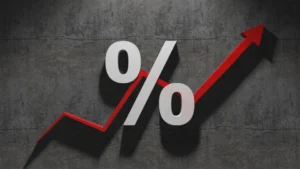Table of contents
ToggleIntroduction
In 2018, the world witnessed the beginning of an unprecedented trade war between the United States and China. Increased tariffs, mutual threats, and diplomatic tensions reminded us that international trade can become a true economic weapon.
But first, what is a trade war? The term “war” here refers to a conflictual and oppositional relationship between several countries. This confrontation does not involve bombings but rather economic measures aimed at weakening the opponent without engaging in military warfare. A trade war is often the embodiment of exacerbated protectionism, leading to restrictions on imports and an escalation of protectionist measures at the expense of international trade.
In the current context, the United States has declared an outright trade war against the entire world, including its closest allies such as Europe and Canada. This clash stems from a protectionist ideology promoted by Donald Trump’s administration. Unfortunately, history has shown us that there are no winners in a trade war. The only consequences of increasing tariffs are rising inflation, declining international trade, and a snowball effect across all sectors of the economy.
The resort to protectionism thus raises fundamental questions: Why do states choose to engage in economic confrontations? What instruments do they use? And above all, what are the impacts of these trade conflicts on growth, businesses, consumers, and global balances?
This article aims to explore the origins of trade wars, their mechanisms, and their economic repercussions on a global scale.
1. Causes of Trade Wars
Trade wars are not always triggered by the same reasons; they can stem from persistent trade imbalances, political and strategic motivations, or a desire for economic sovereignty.
A. Persistent Trade Imbalances
During trade wars, one of the favorite statistics brandished by belligerents is the trade balance. This indicator compares a country’s imports and exports. More imports than exports result in a trade deficit, while the opposite leads to a surplus. This parameter is often used to justify the initiation of a trade war, as the country with a deficit perceives this imbalance as unfair competition.
Trump’s protectionist policy is a concrete example. The goal was to demonstrate that the U.S. had significant trade deficits with its trading partners, thereby justifying retaliatory tariffs meant to restore trade balance.
B. Political and Strategic Motivations
Beyond economic considerations, trade wars are often instrumentalized for political purposes. Governments may resort to them to assert their authority domestically or strengthen their position on the international stage.
During election periods, some political forces exploit the theme of “defending national jobs” to justify protectionist measures. Donald Trump, for instance, heavily used the “America First” rhetoric to impose tariffs, particularly on China and the European Union.
Such strategies aim to showcase a firm stance against foreign entities but can also trigger retaliatory measures and weaken international cooperation.
C. Issues of Economic Sovereignty
With globalization, many countries have seen entire sectors of their industries relocated abroad, often for cost-related reasons. This increased dependence on foreign suppliers, particularly for strategic goods like semiconductors, medicines, or advanced technologies, has sparked a growing desire to “relocalize” production.
Trade wars can thus be seen as a tool to regain a degree of economic sovereignty. By imposing tariffs or subsidizing certain industries, states attempt to protect critical sectors and reduce their exposure to geopolitical risks.
The COVID-19 pandemic and the war in Ukraine have reinforced this logic, pushing many countries to rethink their trade dependencies and adopt a more defensive stance.
2. Mechanisms and Instruments of Trade Wars
Trade wars do not always take the same form and do not use the same tools. The “softer” forms involve tariffs and quotas on certain imported products, while more “severe” measures like embargoes can also be applied.
A. Tariffs and Quotas
Tariffs are perhaps the most iconic instrument of trade wars. They involve taxing imported goods to increase their prices, thus making domestic products more competitive in the local market. This measure aims to protect local industries by discouraging imports deemed harmful to the national economy.
For instance, during the U.S.-China trade conflict, the Trump administration imposed tariffs on over $360 billion worth of Chinese products. In response, China applied similar duties on American goods.
Quotas, on the other hand, limit the volume or value of certain imports. Though less common, they have been used in sensitive sectors like automobiles or textiles to regulate foreign competition.
B. Economic Sanctions and Embargoes
In some cases, trade wars take the form of economic sanctions or embargoes, often driven by geopolitical or diplomatic considerations. These measures involve restricting or even completely banning trade with a targeted country.
For example, the United States imposed heavy sanctions on Iran, limiting its oil exports to pressure its nuclear program. Similarly, Russia has faced a series of Western economic sanctions since the annexation of Crimea in 2014, which were intensified after the invasion of Ukraine in 2022.
These instruments have significant economic impacts, not only on the targeted country but also on its trade partners, multinational companies, and financial markets.
C. Non-Tariff Measures: Subtle Protectionism
Beyond tariffs and sanctions, trade wars can also take more discreet forms, known as “non-tariff” measures. These include technical, sanitary, environmental standards, or public subsidies that complicate foreign products’ access to the domestic market.
For example, a country may require imported goods to meet strict environmental standards or impose rigorous sanitary inspections that slow down trade. These regulatory barriers can be strategically used to favor local producers while ostensibly complying with international trade rules.
Subsidies to certain industries (like agriculture or renewable energy) also constitute a form of disguised protectionism, often criticized by trade partners as a distortion of competition.
3. Global Economic Consequences
Trade wars do not only affect the warring countries but have worldwide repercussions. Globalization has interconnected every part of the world, creating a domino effect on all economies. This effect becomes even more visible when major powers like China or the United States are involved.
A. Slowing Global Economic Growth
One of the most immediate effects of trade wars is the slowdown of global economic growth. When trade is hindered by tariffs, sanctions, or various restrictions, businesses reduce investments, delay expansion projects, and adopt a more cautious approach amid uncertainty.
The International Monetary Fund (IMF) estimated that the U.S.-China trade war shaved off nearly 0.8 percentage points from global GDP growth between 2018 and 2019. Trade tensions create an unstable climate that particularly affects developing countries, which often heavily rely on exports to sustain their growth.
B. Disruption of Global Value Chains
In a world where production is fragmented across multiple countries, trade wars disrupt international supply chains. A company assembling smartphones in Asia, for instance, could be penalized by higher tariffs on components imported from the U.S. or Europe.
This situation is pushing many multinationals to reconfigure their value chains, by relocating certain activities or diversifying their sources of supply. While this can strengthen economic resilience in the long run, it leads to higher production costs, lower profit margins, and increased logistical tensions in the short term.
C. Effects on Consumers and Employment
The repercussions of trade wars are not limited to businesses or states. Consumers also bear the consequences, notably through rising prices. When a country imposes taxes on imported goods, it is often the end consumers who absorb the extra costs, whether for electronics, food, or clothing.
Furthermore, certain economic sectors become vulnerable to foreign retaliatory measures. An export-driven industry targeted by sanctions or quotas can experience reduced activity, leading to layoffs or factory closures. Thus, far from “protecting national jobs” as often promised by protectionist rhetoric, trade wars can actually destroy jobs in exposed sectors.
Conclusion
At a time when the global economy relies on interdependence among nations, trade wars appear as a regression to the nationalist and protectionist logics of the past. Driven by political interests, economic imbalances, or sovereignty issues, these tensions disrupt the smooth functioning of international trade, hinder growth, disorganize value chains, and hurt both businesses and consumers.
While protectionist measures may seem appealing in the short term to defend certain sectors or rebalance trade, their collateral effects are often much more costly than anticipated. In a world facing common challenges (climate change, health crises, geopolitical instability), economic cooperation is more essential than ever.
In this context, the role of international institutions like the World Trade Organization (WTO) is crucial to fostering dialogue, preventing trade conflicts, and ensuring a fair trading framework between nations. Ultimately, global economic stability cannot rest on confrontation but must be built on negotiation and the establishment of common rules.





